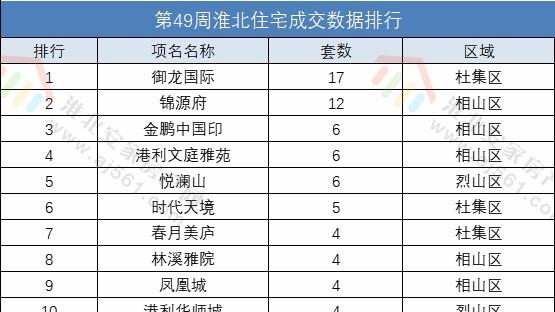【Apache Calcite进行SQL解析】人生处万类,知识最为贤。这篇文章主要讲述Apache Calcite进行SQL解析相关的知识,希望能为你提供帮助。
背景当一个项目分了很多模块,很多个服务的时候,一些公共的配置就需要统一管理了,于是就有了元数据驱动!
简介什么是Calcite?
是一款开源SQL解析工具, 可以将各种SQL语句解析成抽象语法树AST(Abstract Syntax Tree), 之后通过操作AST就可以把SQL中所要表达的算法与关系体现在具体代码之中。
Calcite能做啥?
- SQL 解析
- SQL 校验
- 查询优化
- SQL 生成器
- 数据连接
上代码:
SQL语句转化:
public static SqlNode parseStatement(String sql)
SqlParser parser = SqlParser.create(sql, config.getParserConfig());
try
return parser.parseQuery();
catch (Exception e)
e.printStackTrace();
throw new UnsupportedOperationException("operation not allowed");
解析Select中的表名:
private static Set<
String>
extractSourceTableInSelectSql(SqlNode sqlNode, boolean fromOrJoin)
if (sqlNode == null)
return new HashSet<
>
();
final SqlKind sqlKind = sqlNode.getKind();
if (SqlKind.SELECT.equals(sqlKind))
SqlSelect selectNode = (SqlSelect) sqlNode;
Set<
String>
selectList = new HashSet<
>
(extractSourceTableInSelectSql(selectNode.getFrom(), true));
selectNode.getSelectList().getList().stream().filter(node ->
node instanceof SqlCall)
.forEach(node ->
selectList.addAll(extractSourceTableInSelectSql(node, false)));
selectList.addAll(extractSourceTableInSelectSql(selectNode.getWhere(), false));
selectList.addAll(extractSourceTableInSelectSql(selectNode.getHaving(), false));
return selectList;
if (SqlKind.JOIN.equals(sqlKind))
SqlJoin sqlJoin = (SqlJoin) sqlNode;
Set<
String>
joinList = new HashSet<
>
();
joinList.addAll(extractSourceTableInSelectSql(sqlJoin.getLeft(), true));
joinList.addAll(extractSourceTableInSelectSql(sqlJoin.getRight(), true));
return joinList;
if (SqlKind.AS.equals(sqlKind))
SqlCall sqlCall = (SqlCall) sqlNode;
return extractSourceTableInSelectSql(sqlCall.getOperandList().get(0), fromOrJoin);
if (SqlKind.IDENTIFIER.equals(sqlKind))
Set<
String>
identifierList = new HashSet<
>
();
if (fromOrJoin)
SqlIdentifier sqlIdentifier = (SqlIdentifier) sqlNode;
identifierList.add(sqlIdentifier.toString());
return identifierList;
Set<
String>
defaultList = new HashSet<
>
();
if (sqlNode instanceof SqlCall)
SqlCall call = (SqlCall) sqlNode;
call.getOperandList()
.forEach(node ->
defaultList.addAll(extractSourceTableInSelectSql(node, false)));
return defaultList;
解析Insert语句中的表名:
private static Set<
String>
extractSourceTableInInsertSql(SqlNode sqlNode, boolean fromOrJoin)
SqlInsert sqlInsert = (SqlInsert) sqlNode;
Set<
String>
insertList = new HashSet<
>
(extractSourceTableInSelectSql(sqlInsert.getSource(), false));
final SqlNode targetTable = sqlInsert.getTargetTable();
if (targetTable instanceof SqlIdentifier)
insertList.add(((SqlIdentifier) targetTable).toString());
return insertList;
执行效果
private static final String sql0 = "SELECT MIN(relation_id) FROM tableA JOIN TableBGROUP BY account_instance_id, follow_account_instance_id HAVING COUNT(*)>
1";
private static final String sql1 = "SELECT * FROM blog_user_relation a WHERE (a.account_instance_id,a.follow_account_instance_id) IN (SELECT account_instance_id,follow_account_instance_id FROM Blogs_info GROUP BY account_instance_id, follow_account_instance_id HAVING COUNT(*) >
1)";
private static final String sql2 = "select name from (select * from student)";
private static final String sql3 = "SELECT * FROM Student LEFT JOIN Grade ON Student.sID = Grade.gID\\n" +
"UNION\\n" +
"SELECT * FROM Student RIGHT JOIN Grade ON Student.sID = Grade.gID";
private static final String sql4 = "SELECT *\\n" +
"FROM teacher\\n" +
"WHERE birth = (SELECT MIN(birth)\\n" +
"FROM employee)";
private static final String sql5 = "SELECT sName\\n" +
"FROM Student\\n" +
"WHERE 450 NOT IN (SELECT courseID\\n" +
"FROM Course\\n" +
"WHERE sID = Student.sID)";
final SqlNode sqlNode0 = parseStatement(sql0);
System.out.println("sqlNode0: " + extractSourceTableInSelectSql(sqlNode0, false));
结果为:

文章图片
结语第一次使用这个组件,感觉还是很强大的,当前还没有深入了解,后续有机会继续分享。。。
推荐阅读
- netty系列之:可以自动通知执行结果的Future,有见过吗()
- LVS+Keppalived群集
- 想进阿里腾讯等互联网公司(没懂这些 Java 并发编程怎么行)
- hadoop+zookeeper+kafka集群搭建
- 为什么Java接口不能有构造函数而抽象类可以有()
- 为什么在C++中空类的大小不为零()
- 为什么优先队列优先使用二叉堆而不是BST()
- 为什么不推荐在Python中使用import*()
- 为什么DNS使用UDP而不使用TCP()











